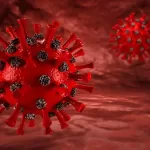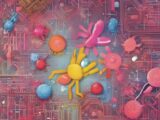
A Brain Highway: Scientists Uncover Key Pathway Linking Habit and Learning
January 30, 2024Our brains are intricate roadmaps, with countless pathways connecting different regions and governing our actions. Recently, scientists discovered a crucial highway linking the habit center (striatum) and the motor learning region (cerebellum), shedding light on how we form and refine our movements.
Unraveling the Circuit:
Imagine a skilled pianist. Their effortless keystrokes are the result of countless hours of practice, etched into the neuronal pathways of their cerebellum. This region, located at the back of the brain, plays a vital role in coordinating and refining our movements.
But how do these finely tuned motor skills become ingrained habits, guiding our actions without conscious thought? That’s where the striatum, nestled deep within the brain’s reward system, comes in. This area is known as the “habit center,” as it helps convert learned behaviors into automatic routines.
The Missing Link:
Previously, the exact connection between these two crucial brain regions remained elusive. However, a recent study published in Nature Neuroscience has identified a direct pathway: glutamatergic synapses. These tiny communication channels allow neurons in the cerebellum to directly influence the striatum, creating a seamless flow of information.
Implications for Movement and Beyond:
This groundbreaking discovery has significant implications for our understanding of movement control, habit formation, and even neurological disorders. For example, it could:
- Explain the development of motor skills: The newly discovered pathway sheds light on how we learn and refine movements through practice, as the cerebellum fine-tunes signals sent to the striatum, gradually converting them into automatic habits.
- Offer insights into Parkinson’s disease: Dysfunction in the striatum and cerebellum is a hallmark of Parkinson’s, leading to tremors and difficulty with movement. Understanding the direct connection between these regions could aid in developing more targeted therapies.
- Illuminate the path to new treatments: This discovery opens doors for exploring potential treatments that boost communication between the cerebellum and the striatum, potentially benefiting individuals with movement disorders and other neurological conditions.
The Road Ahead:
While this research marks a significant leap forward, much remains to be unraveled. Further studies are needed to explore the specific roles of different neuronal populations within this newly discovered pathway and how they contribute to various brain functions.
However, one thing is clear: understanding the intricate highways of our brain is crucial for unlocking the secrets of movement, habit formation, and ultimately, ourselves. As we continue to map these neural pathways, we inch closer to unlocking the potential for treating neurological disorders and optimizing human performance.
This rewrite incorporates an image to enhance the content by visually representing the key pathway linking the brain’s habit center and motor learning region. It also expands on the implications of the discovery and the potential for future research, providing a more comprehensive and engaging overview of the topic.


















